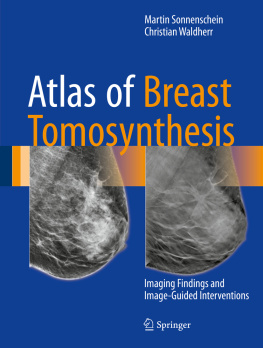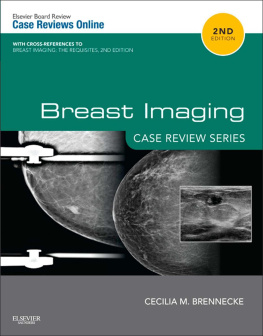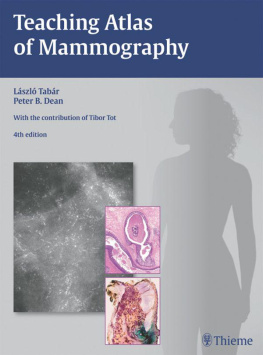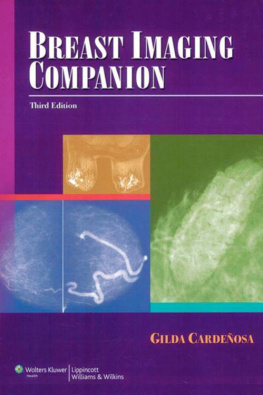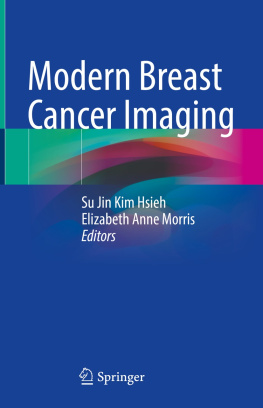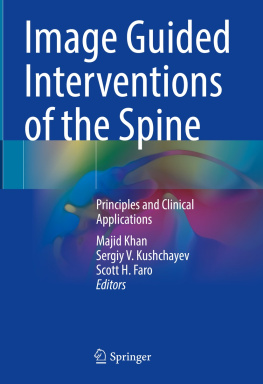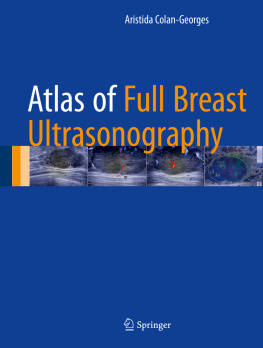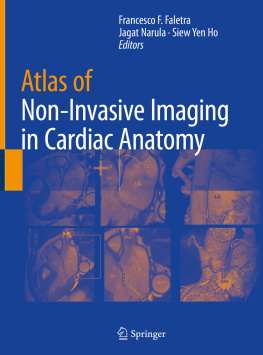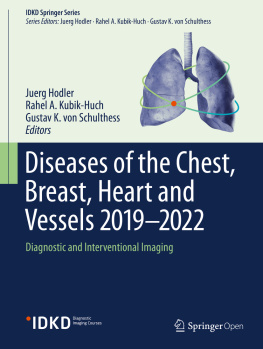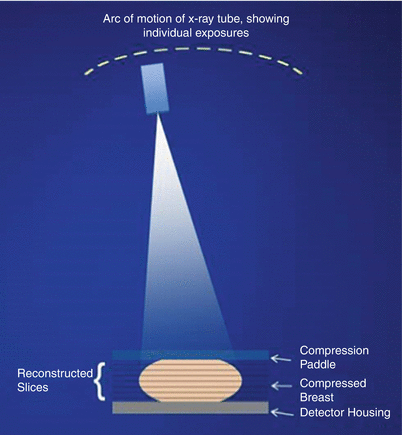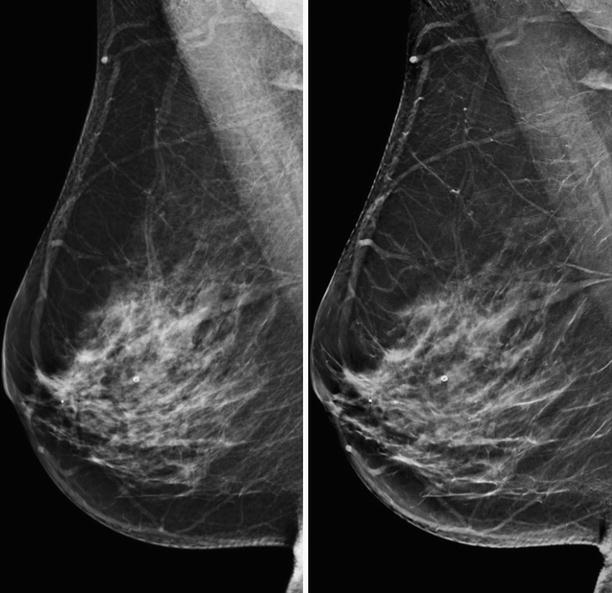Figure presents the basics of a breast tomosynthesis system. The breast is compressed, as with conventional 2D mammography, between a compression paddle and the detector housing. While the breast is kept stationary, the X-ray tube is moved, usually in an arcuate motion, and a set of low-dose images known as projections is collected. These are acquired at different angular locations of the tube. The total angular range covered by the X-ray tube is called the scan angle.
Fig. 1.1
Schematic showing of the basic operation of a tomosynthesis system
After the scan is completed, the projections are used to calculate a 3D image consisting of high-resolution tissue slices whose planes are parallel to the breast support plates. This procedure is known as reconstruction and is similar to the methods used to reconstruct images from a conventional computed tomography (CT) scanner. The number of reconstructed slices depends on the thickness of the compressed breast and the desired separation between slices, typically about 1 mm. After reconstruction, the slices are transmitted to a diagnostic workstation for display and review by a radiologist.
1.2.1 Acquisition and Reconstruction Methods
The way in which tomosynthesis acquisition is performed varies from manufacturer to manufacturer. For commercially available systems or those that have been evaluated in prototype versions, scan angles range from 11 to 50, reconstructed slice thicknesses range from 0.5 to 1.0 mm, and scan times range from less than 4 to 25 s. A variety of reconstruction algorithms have been evaluated, including filtered back projection and iterative reconstruction methods. For the purposes of this book, with its clinical emphasis, the system variations mentioned here may not be relevant. These systems all generate 3D images that can be viewed in thin, cross-sectional slices through the breast.
1.2.2 Characteristics of the Reconstructed Image
Tomosynthesis is a form of limited-angle tomography. The term limited angle means that, unlike CT imaging, where the X-ray source and detector rotate through 360, the smaller scan angles in breast tomosynthesis result in image characteristics that are fundamentally different from a CT image. In a CT image, the voxels, or three-dimensional pixel, can be isotropic. In other words, the x , y , and z dimensions of the voxel are similar in size. In a breast tomosynthesis system, the x and y dimensions, or resolution, are often finer than in a CT image, and the third dimension, z, has a resolution that is poorer than the x and y resolution. Typical values for a breast tomosynthesis system exhibit an x and y resolution of about 0.1 mm and a z resolution of about 35 mm. Confusingly, the z resolution is not the same as the slice thickness, which is typically 1 mm. When it is said that the z resolution is 3 mm, for example, it can be observed that an object will be visible in several slices above and below its actual location in space. If reconstruction results in a thinner slice, say 0.5 mm, then the object will be visible in twice as many slices. Making the reconstructed slice thinner does not improve the z resolution of the system.
The nonisotropic nature of the voxels defines a natural coordinate system, which is where slices are parallel to the breast platform. A craniocaudal (CC) image cannot be reformatted into a mediolateral oblique (MLO) image, or vice versa, because the resolution in the z direction is poorer than the resolution in the x , y plane. This differs from CT imaging, where an image can easily be reformatted into a transverse, sagittal, coronal, or any arbitrary orientation.
There are important clinical ramifications to the nonisotropic nature of the image. Tumors may appear more conspicuous in one projection than another, and multiple studies have shown that cancers are often better visualized in either the CC or MLO tomosynthesis image; therefore, acquiring both CC and MLO 3D images may maximize cancer detection (Rafferty et al. ). This is analogous to the standard practice in 2D mammography.

